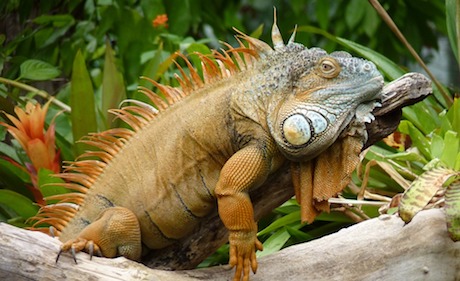[ad_1]
Down deep, do you feel at ease?
The Practice:
Pet the lizard.
Why?
I’ve always liked lizards.
Growing up in the outskirts of Los Angeles, I played in the foothills near our home. Sometimes I’d catch a lizard and stroke its belly, so it would relax in my hands, seeming to feel at ease.
In my early 20’s, I found a lizard one chilly morning in the mountains. It was torpid and still in the cold and let me pick it up. Concerned that it might be freezing to death, I placed it on the shoulder of my turtleneck, where it clung and occasionally moved about for the rest of the day. There was a kind of wordless communication between us, in which the lizard seemed to feel I wouldn’t hurt it, and I felt it wouldn’t scratch or bite me. After a few hours, I hardly knew it was there, and sometime in the afternoon, it left without me realizing it.
Now, years later, as I’ve learned more about how the brain evolved, my odd affinity for lizards has started making sense to me. To simplify a complex journey beginning about 600 million years ago, your brain has developed in three basic stages:
- “Reptile” – Brainstem, focused on avoiding harm
- “Mammal” – Limbic system, focused on approaching rewards
- “Primate” – Cortex, focused on attaching to “us”
Of course, the brain is highly integrated, so these three key functions – avoiding, approaching, and attaching – are accomplished by all parts of the brain working together. Nonetheless, each function is particularly served by the region of the brain that first evolved to handle it. This fact has significant implications.
For example, in terms of avoiding harm, the brainstem and the structures just on top of it are fast and relatively rigid. Neuroplasticity – the capacity of the brain to learn from experience by changing its structure – increases as you move up both the evolutionary ladder and the layered structures of the brain.
Consequently, if you want to help yourself feel less concerned, uneasy, nervous, anxious, or traumatized – feelings and reactions that are highly affected by “reptilian,” brainstem-related processes – then you need many, many repetitions of feeling safe, protected, and at ease to leave lasting traces in the brainstem and limbic system structures that produce the first emotion, the most primal one of all: fear.
Or to put it a little differently, your inner iguana needs a LOT of petting!
[ad_2]
www.rickhanson.net







